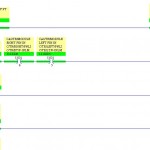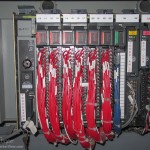My father-in-law made a career of repairing the heavy machinery of the local plywood and paper mills in the lumber and farming community of LaGrande, Oregon. Large machines such as high speed saws, conveyors, process tanks and more. One evening he was working with something I did not recognize and I made the mistake of asking what it was.

As a computer engineering student I was appalled that anyone would program this way, I could not conceive of using such a backwards seeming technology. Why not just use a simple programming language like C to build the functions? Ladder logic was the worst sort of programming language, no abstraction, no compartmentalization, prone to building hard to understand spaghetti code.

Jumping ahead more than a decade… I now find myself using this same technology and programming in ladder logic. Many of the critical systems at Keck use PLC’s for control. The dome controllers, local controls and various safety systems use PLC’s to accomplish the task. Some of these systems are over two decades old, and for the most part spares can still be purchased.
The technology is not dead, far from it. The new telescope control systems currently being designed will feature modern ControlLogix PLC’s to implement the critical safety functions. There are dozens of interlocks throughout the telescope, switches that detect the condition of the system and prevent bad things from happening. If a lock pin is not installed, if a drawbridge is down or a crane not stowed properly, the telescope does not move.
Never mind me, I am just reading a twenty year old user manual, learning how to set the serial communications on a PLC-5.
